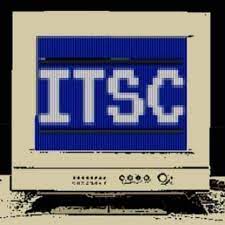
 CVE-2025-62215 is a Windows Kernel flaw that lets attackers escalate to SYSTEM privileges, persist, access data, and move laterally. Attackers are actively exploiting this zero-day in the wild. Review this Cybersecurity Threat Advisory for best practices and recommendations to mitigate your risks.
CVE-2025-62215 is a Windows Kernel flaw that lets attackers escalate to SYSTEM privileges, persist, access data, and move laterally. Attackers are actively exploiting this zero-day in the wild. Review this Cybersecurity Threat Advisory for best practices and recommendations to mitigate your risks.
What is the threat?
This is a kernel-level privilege-escalation flaw caused by a race condition and improper memory handling, including a double-free. A double-free condition happens when memory is freed more than once, leading to memory corruption and exploitation. Upon a successful exploitation, an attacker can gain SYSTEM privileges, as well as disable defenses and move laterally within an environment.
Why is it noteworthy?
This vulnerability affects a wide range of Windows systems because it’s a kernel-level flaw at the core of the OS, giving attackers deep access. For businesses, exploitation can lead to downtime, data exposure, regulatory penalties, financial loss, and reputational damage from outages or ransomware attacks.
It underscores the critical need for proactive measures such as regular patching, robust patch management programs, Privileged Access Management (PAM), and preventing privilege creep to reduce risk.
What is the exposure or risk?
This zero-day affects all devices running the impacted Windows versions—Windows 10; Windows 11 (22H2, 23H2, 24H2); and Windows Server (2019, 2022, 2025)—which are common in business environments. Because these versions are widely deployed, the organizational risk is high.
An unpatched system provides attackers an easy foothold for privilege escalation, persistence, and lateral movement across endpoints and servers. Exploitation can disable defenses, harvest credentials, and seize control of critical infrastructure and data.
Servers, jump hosts, and admin workstations are most at risk, as their privileged access and central network roles can amplify the impact—leading to operational disruption, security compromise, and reputational damage if breached.
What are the recommendations?
Barracuda recommends the following actions to secure your systems:
- Apply available Windows Kernel patch.
- Ensure core systems and identity/authentication pathways receive priority in patching.
- Enforce least privilege and minimize administrative ad hoc access.
- Strengthen endpoint protection with EDR/XDR, such as Barracuda Managed XDR, and configure detection for privilege-escalation techniques.
- Monitor for unusual kernel-level activity, suspicious process creation, and privilege changes; review event logs and security alerts.
- Tighten patch management processes and validate successful deployment across all endpoints.
- Consider compensating controls for unpatched systems (network segmentation, heightened monitoring, temporary access restrictions).
References
For more in-depth information about the recommendations, please visit the following links:
- https://cyberpress.org/windows-kernel-0-day-vulnerability/
- https://thehackernews.com/2025/11/microsoft-fixes-63-security-flaws.html
- https://nvd.nist.gov/vuln/detail/CVE-2025-62215
If you have any questions about this Cybersecurity Threat Advisory, don’t hesitate to get in touch with Barracuda Managed XDR’s Security Operations Center.
This post originally appeared on Smarter MSP.

